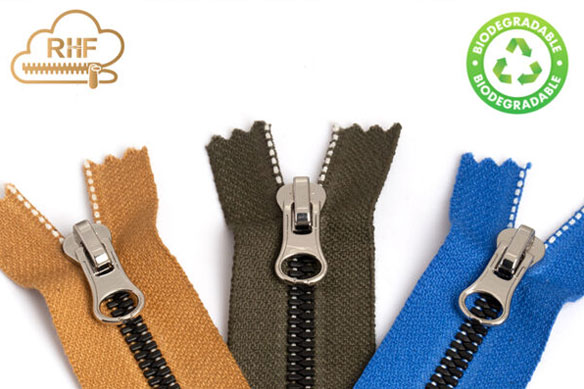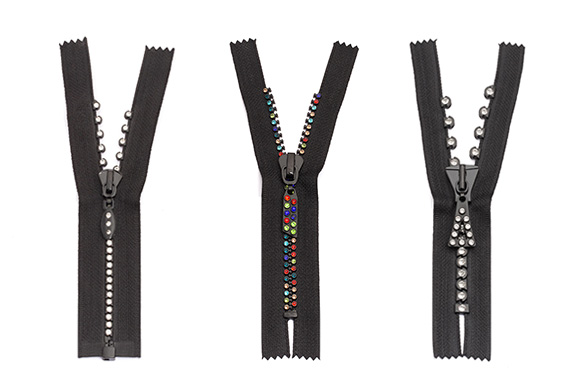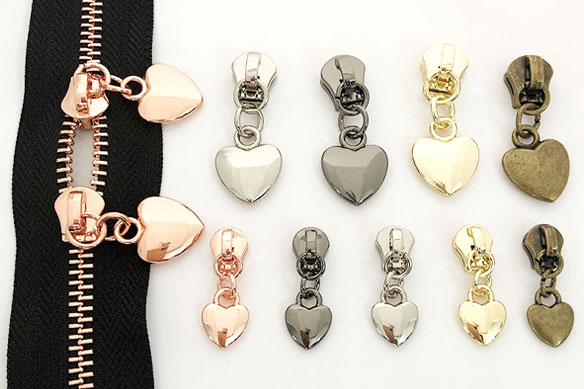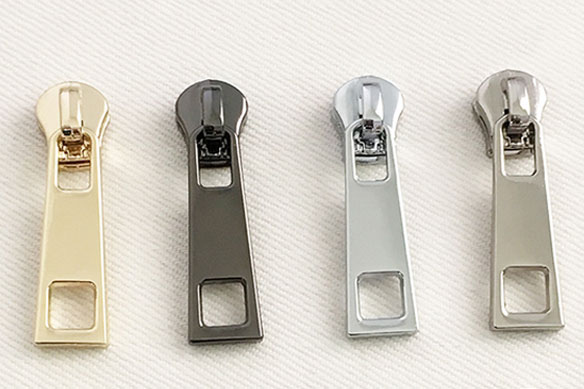Introduction
Zippers are a crucial component in fashion, luggage, and manufacturing industries, playing a key role in the functionality and aesthetics of garments, bags, and accessories. However, a stuck or malfunctioning zipper can disrupt production, affect product quality, and frustrate end consumers. Many zipper failures stem from common issues such as misalignment, dirt buildup, or improper slider selection. Fortunately, these problems can often be prevented or fixed with the right techniques. This article explores the most frequent zipper issues, why they occur, and how fashion brands and manufacturers can address them efficiently.
1. Misalignment and Improper Installation
One of the leading causes of zipper jams in apparel and bags is misalignment. Zippers function by interlocking small teeth or coils in perfect alignment, and any deviation can cause resistance or failure, leading to production delays and quality concerns.
Common Misalignment Issues and Solutions
| Issue | Cause | Solution |
|---|---|---|
| Breakaway zipper won’t zip | The insertion pin is not fully inserted into the bottom slider. | Ensure the pin is fully seated before attempting to zip up. |
| Slider gets stuck at a certain point | A single misaligned tooth blocks smooth movement. | Reverse the zipper slowly to realign the teeth. |
| Zipper wrinkles or becomes difficult to close | Fabric skewing makes one side of the zipper shorter than the other. | Adjust the fabric during stitching to maintain alignment. |
Quick Fix:
- If the zipper won’t move, avoid forcing it. Instead, check the bottom alignment or gently realign the fabric.
- For jackets or bags with a breakaway zipper, ensure the pin is fully inserted before pulling the slider.
- If the teeth are misaligned, carefully unzip, straighten them, and try again.
2. Debris Buildup and Lack of Lubrication
In manufacturing environments, zippers can collect dust, lint, and fabric particles, especially during high-volume production runs. Dirt can clog the slider’s path, creating friction that prevents smooth operation. Additionally, metal-to-metal contact in zippers can become rough without proper lubrication, leading to increased wear over time.
Cleaning and Lubrication Methods
| Method | Tools Needed | How to Apply |
| Remove debris | Soft brush, tweezers, or compressed air | Brush away dust or pull out trapped lint with tweezers. |
| Lubricate | Graphite pencil, silicone spray, or candle wax | Lightly rub graphite or wax along the teeth or spray a small amount of silicone for smooth gliding. |
Quick Fix:
- Use a soft brush or tweezers to remove visible lint or dirt from production residues.
- Rub a graphite pencil tip along the zipper teeth for a quick and mess-free lubricant.
- For tougher jams, apply a small amount of silicone spray or candle wax to ease movement.
3. Zipper and Slider Size/Model Mismatch
Using the wrong slider size or model can lead to zipper jams, resistance, or even zipper bursts. Fashion brands and manufacturers must ensure the correct zipper-slider pairing to maintain product integrity and avoid defects.
How to Identify and Fix Mismatched Sliders
| Issue | Cause | Solution |
| Zipper moves but feels rough or uneven | The slider is too tight or the wrong model. | Check the zipper code and ensure the slider matches the manufacturer’s specifications. |
| Slider falls off or doesn’t grip the teeth properly | The slider is too loose or oversized. | Replace with the correct size slider that fits snugly. |
| Zipper bursts open after closing | The slider is worn out or incorrect. | Use a new, correctly sized slider to restore proper function. |
Quick Fix:
- Identify the zipper type (metal, nylon, plastic) and match it with the appropriate slider.
- If the slider is damaged or loose, replace it with a properly fitted one from a reliable supplier.
- Never force a slider that doesn’t glide smoothly—this can worsen the issue.
4. Preventative Maintenance for Long-Lasting Zippers
Proper care and maintenance can significantly extend the lifespan of zippers, reducing production defects and ensuring end-user satisfaction.
Best Practices for Zipper Maintenance
- Keep it clean: Regularly remove dust and lint, especially in high-volume manufacturing environments.
- Lubricate periodically: Apply graphite, silicone spray, or wax for smooth movement, particularly on high-use zippers.
- Avoid excessive force: Forcing a stuck zipper can misalign teeth or damage the slider, leading to product failure.
- Test before final production: Ensure smooth zipper operation before sewing it into garments or bags to prevent defects.
- Store properly: Keep zippers zipped when storing garments to maintain alignment and prevent damage.
5. When to Replace a Zipper
Sometimes, despite best efforts, a zipper may need replacement. Knowing when to repair versus replace can save manufacturers time and prevent costly returns.
Signs a Zipper Needs Replacement
| Issue | Repair or Replace? | Reason |
| Slider is worn out | Repair | Replacing the slider can restore function. |
| Teeth are missing or broken | Replace | Irreparable damage makes smooth operation impossible. |
| Fabric tape is torn | Replace | A damaged tape cannot hold the zipper together securely. |
Quick Fix:
- If the slider is the problem, a simple replacement can restore functionality.
- If the zipper teeth or fabric tape are damaged, replacing the entire zipper is the best solution to maintain product quality.
Conclusion
For fashion brands and manufacturers, zipper issues like jamming, misalignment, and slider mismatches can cause production delays and customer complaints. However, these problems are preventable with proper quality control, maintenance, and correct zipper selection. By implementing regular inspections, cleaning procedures, and ensuring correct slider-zipper pairing, brands can enhance their product quality and avoid costly defects. A well-functioning zipper not only improves durability but also enhances the customer experience.





